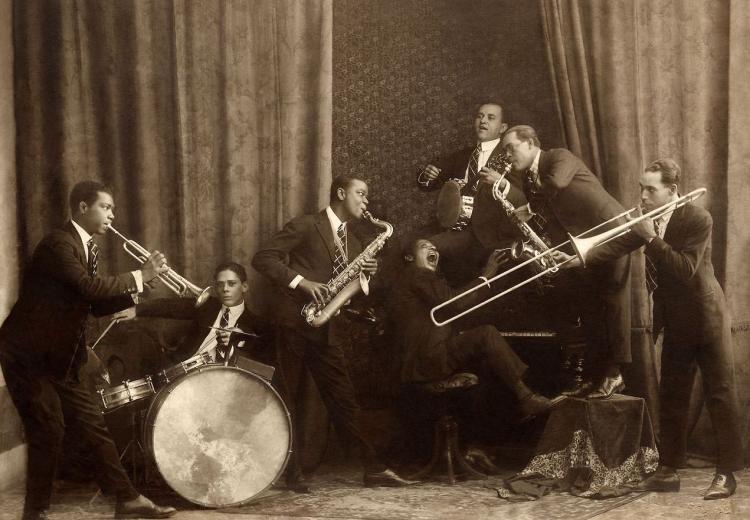Hearing the Americas

Oito Batutas, one of the most influential Brazilian bands of the 1920s.
The NEH-funded digital history project Hearing the Americas provides an interactive way to explore the first decades of recorded music in the early twentieth century. Through quiz-like “spins” and essays with embedded music clips, the site covers the development of musical styles, the technological advancements and marketing strategies of the early recording industry, and the lives and careers of popular artists.
Created by the Roy Rosenzweig Center for History and New Media at George Mason University, Hearing the Americas reveals how ideas about genre, race, and nation were formed in the transnational circulation of people and records. Focusing on the United States and Latin America, the site shows how musical interactions originating in the African Diaspora were remade by the new record business. Familiar genres like blues, jazz, folk, country, and Latin didn’t yet exist in this period, so Hearing the Americas helps make sense of the seemingly strange ways that record companies marketed early records. As the site’s authors explain, a 1914 record marketed as a “blues” might actually sound like a marching band playing a tango.
The site also examines how the commercial distribution of records shaped our modern ideas about race and authenticity within musical genres. Hearing the Americas demonstrates that the recording industry did not simply capture music as it existed out in the world but directly influenced the development of musical styles and genre conventions.
Key musical terms like syncopation, twelve-bar blues, and clave are explained with accompanying audio examples, making the site useful to introduce music theory in addition to the history of music, technology, race relations, and the African diaspora.
Note: Some of the primary sources on this website include racial slurs, epithets, pejorative terms, and racially stereotyped images and instances of blackface, redface, and yellowface. See the content notice for a full statement.
